How to Control Stretching of Cannabis Plants?
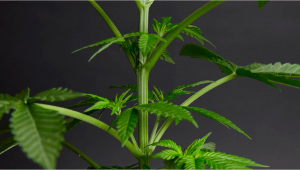
- 1. What happens when plants stretch?
- 2. Why do cannabis plants stretch?
- 3. How to prevent stretching of cannabis plants
- 3. a. Choose the right strain
- 3. b. Manage the heat
- 3. c. Reduce the vegetative period
- 3. d. Employ training techniques
- 4. In conclusion
Cannabis seeds grow very well without a lot of maintenance during their vegetative stage. They put out pretty green leaves and prepare for the reproductive or flowering stage. There isn’t a lot to do during the growing stage, but the flowering stage definitely requires maintenance. From pests to diseases to stretching, there can be too many headaches to count. If you’re wondering how to control the stretching of cannabis plants, this article will show you simple steps that will help you harvest great yields. It’s not that the plants don’t stretch during the vegetative stage – they do – but it’s a lot more during the flowering stage. Stretching is nothing but a natural spurt of growth and is common for all cannabis plants. However, it works only if it’s moderate. Stretch too much and the plants start putting out buds that are airy and tiny.
On the other hand, when plants don’t stretch too much and grow sideways, you get healthy buds. This means that one must control stretching to prevent loss of yield, not to mention quality. Stretching occurs due to multiple reasons out of which genetics plays a role too. This is why some plants that remain small and compact will also produce offspring that grow in a similar fashion. Even lanky plants will only give you plants that grow tall and lanky. So, is all hope lost, you ask? No… You can control stretching in various ways, so let’s take a look at them.
1. What happens when plants stretch?
Stretching is not that big a deal if you’re growing plants outdoors. Like other plants, cannabis plants also enjoy growing outdoors and you don’t have to worry much at all. Sometimes, the plants can stretch too much even when outdoors, but you can control them using training methods like LST. For the most part, stretching occurs when the plants are indoors. As mentioned already, stretching invites problems and instead of growing plants that grow compact with thick buds, you’ll have a bunch of plants growing upwards. They become spindly and tall and stop focusing on the buds while diverting all their attention to stretching. When this happens, the quality of the buds takes a hit and you’ll lose quite a bit of the yield too. However, stretching isn’t a phenomenon unique to the flowering stage. It can also occur early on in the vegetative stage.
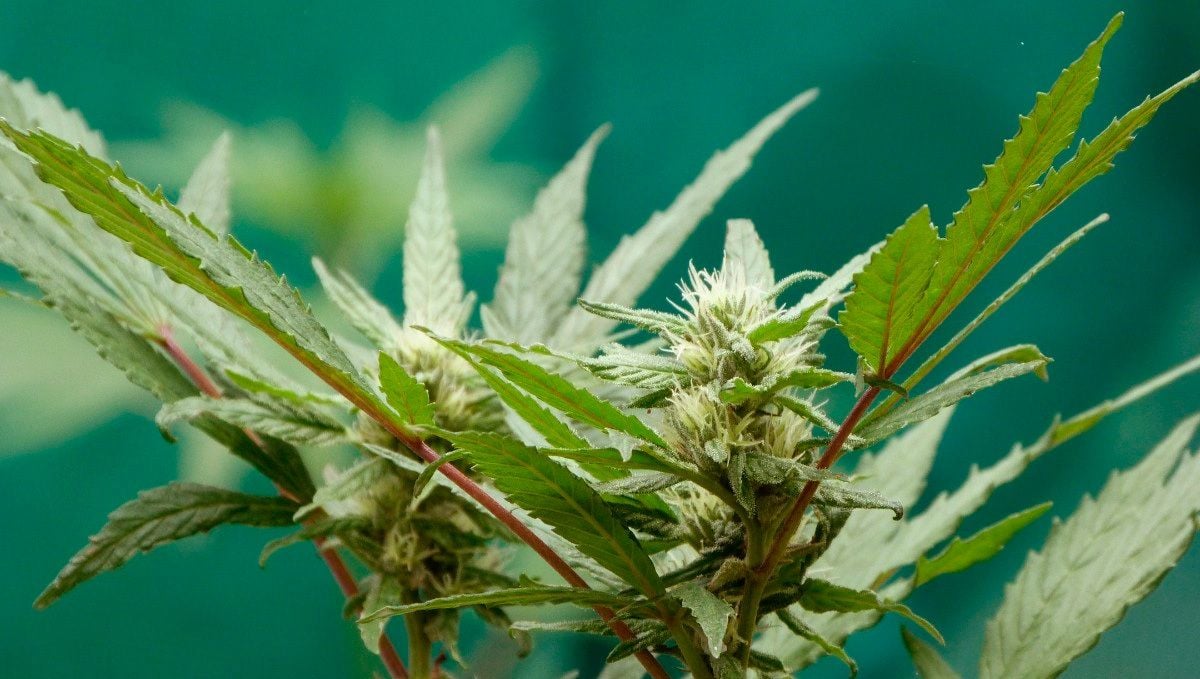
During mid to late veg, stretching can result in a thin, narrow, and generally unhealthy plant that will struggle to bear the burden of thick buds later down the line in the flowering stage. However, out of all of the stages of plant growth, stretching is the most undesirable during the seedling stage. You see, plant growing tips contain growth hormones that position plants towards light—a resource that they depend upon to conduct photosynthesis, grow, and survive.
When plants have access to ample light, they grow shorter and stronger. In contrast, a lack of light post-germination causes plants to desperately shoot upwards. These conditions create a leggy seedling with a considerably long stem and tiny cotyledons and true leaves. When seedlings become excessively leggy, you might as well write them off. Their thin and weak stems won’t have what it takes to hold the weight of a vegging and flowering plant; the bottom of the stem will remain as a weak link in the chain in the face of strong winds and other adverse weather events. To prevent stretching at this crucial time in the growing cycle, you need to provide adequate light intensity. To do this, you can either measure lux or PAR using the corresponding metres that measure these units.
2. Why do cannabis plants stretch?
Stretching usually occurs indoors. If the plants aren’t genetically inclined to stretch, they could be stretching due to the lights. If the distance between the plants and the lights is too much, the plants start growing upwards in search of more light. In an effort to go close to the source of light, the plants experience a growth spurt that’s otherwise known as stretching. Stretching also occurs when there are too many plants in a grow room. If the grow room is overcrowded, the plants have no other option other than competing with each other for light. Last but not the least, the type of light you use matters too. Whether they are HPS or LED lights, plants tend to stretch if there’s a lot of red and orange light. You can prevent this by supplementing blue light along with the red lights during flowering since it encourages thicker stems and branches.
You also need to provide a strong source of light. For instance, if you’re growing a couple of plants with only a 100W CFL as the light source, the plants will start stretching since the light isn’t powerful enough. It’s recommended that you provide at least 50 to 70W of light per square foot. Anything less than this will most definitely encourage the plants to stretch to their maximum. Certain strains are more pre-disposed to stretching. Genetics plays a vital role in determining exactly how a plant grows and will have the final say on the height of a plant. We, as cultivators, can control the stretch and overall height of a plant but at the end of the day, we are still at the mercy of the plant’s genetics. Sativa-dominant plants are inherently more stretchy than their Indica-based siblings. This is not a knock on Sativas, as this is just how they have evolved to grow, but it is a good thing to keep in mind when deciding on which strain is right for you.
3. How to prevent stretching of cannabis plants
Choose the right strain
Okay, this is the first thing you need to do because you can do everything and the plants will still stretch if it's in their genes. And, this will happen even if you grow clones or plant seeds! Thus, find the right strains. Most Indica strains tend to grow sideways rather than upwards. At the same time, many Sativa strains are notorious to grow upwards searching for light, and are adept at producing airy buds. Of course, you’ll see that they are many exceptions. Not all Indica plants grow sideways and not all Sativas grow tall and lanky. However, since most of them do, choose Indica strains - Cream Cookies Auto, for example - that grow in a uniform fashion so that the light can be distributed evenly to all plants.
However, genetics will only get you so far. A sativa-dominant strain subject to a suboptimal light intensity will grow extremely leggy, whereas an indica-dominant strain will grow somewhat leggy. The bottom line: They’ll both grow leggy, but they’ll express that undesirable growth pattern in different but equally inefficient manifestations. Ultimately, you can’t get away with inadequate light intensity, regardless of the genetics that you select as a grower.
Manage the heat
When a lot of heat builds up in the grow room, the plants are forced to stretch upwards. Temperatures over 28 degrees C will force plants to grow taller. And as the plants grow closer to the light, they stretch even more. This makes them weak and they can even fall over themselves if you don’t keep an eye on them. To prevent this, make sure that there’s a lot of fresh air circulating in the grow room. Not only will it keep the grow room cool and the plants happy, but the plants will force themselves to develop thicker stems whenever there’s a lot of breeze blowing in their direction. The plants naturally become stronger as a defense mechanism against the wind as it happens in the wild. There are several ways that you can control the variable of heat within an indoor growing space.
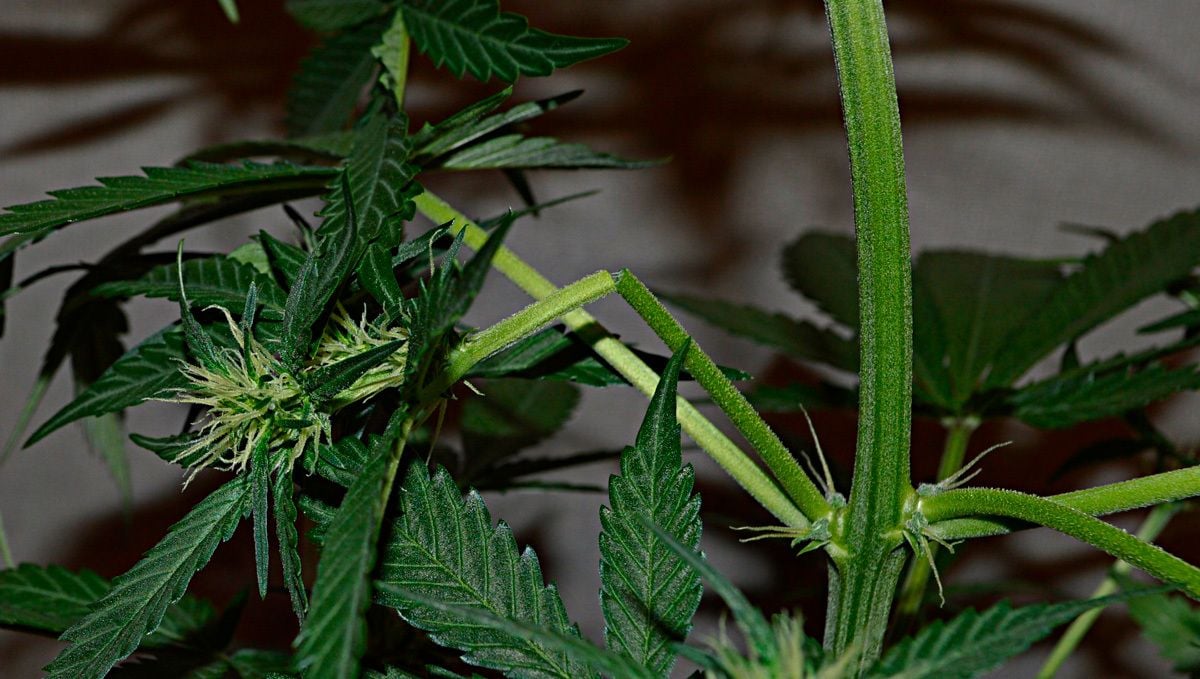
Obviously, fans will help to increase air circulation and cool things down. In more severe situations, you might have to take more serious measures and switch on an air conditioning unit to keep temperatures down. Rather than constantly monitoring the temperature within your growing space, you can hook up your fans and air conditioning unit to a sensor to automate environmental regulation. Growers have a harder time keeping their plants cool outdoors. If you’re growing in a greenhouse or polytunnel, make sure you open up any vents and doors to promote airflow. During intense heat waves, set up sheets of shade cloth over your plants to protect them from excess UV rays.
Reduce the vegetative period
When plants start stretching during the flowering period, growers panic because there won’t be a lot of roof space for the plants to continue growing. Ultimately, they grow too close to the light and experience light-burn that bleaches the buds and leaves as well. If you’re growing a strain with a tendency to stretch, you can reduce the vegetative period so that there’s a lot of time and roof space for the plants to stretch in the flowering phase.
Growers growing photoperiod plants can switch from the vegetative to the reproductive stage by altering the light schedule from 18/6 light/dark cycle to 12/12 cycle. This isn’t necessary if you’re growing autoflowers because they will grow regardless of the light cycle. However, you can control stretching to a great extent by cutting the growing stage short so the plants have enough time and space ahead to stretch all they want.
Employ training techniques
There are several techniques including LST and SCROG meant specifically to prevent cannabis plants from stretching.
LST
Also known as Low-Stress Training, this method involves bending the branches of the plants to the sides of the containers. Growers continue bending the branches throughout the growing cycle and this prevents the plants from growing upwards. Yes, the branches try their best to stand upright, but they will remain bent if you use strong wires to fasten them to the sides.
SCROG
This is a method where the growers allow the plants to grow as much as they want in the vegetative stage. However, during the flowering stage, a screen is placed on top of the plants where the branches are tucked in as soon as they try to peek out.
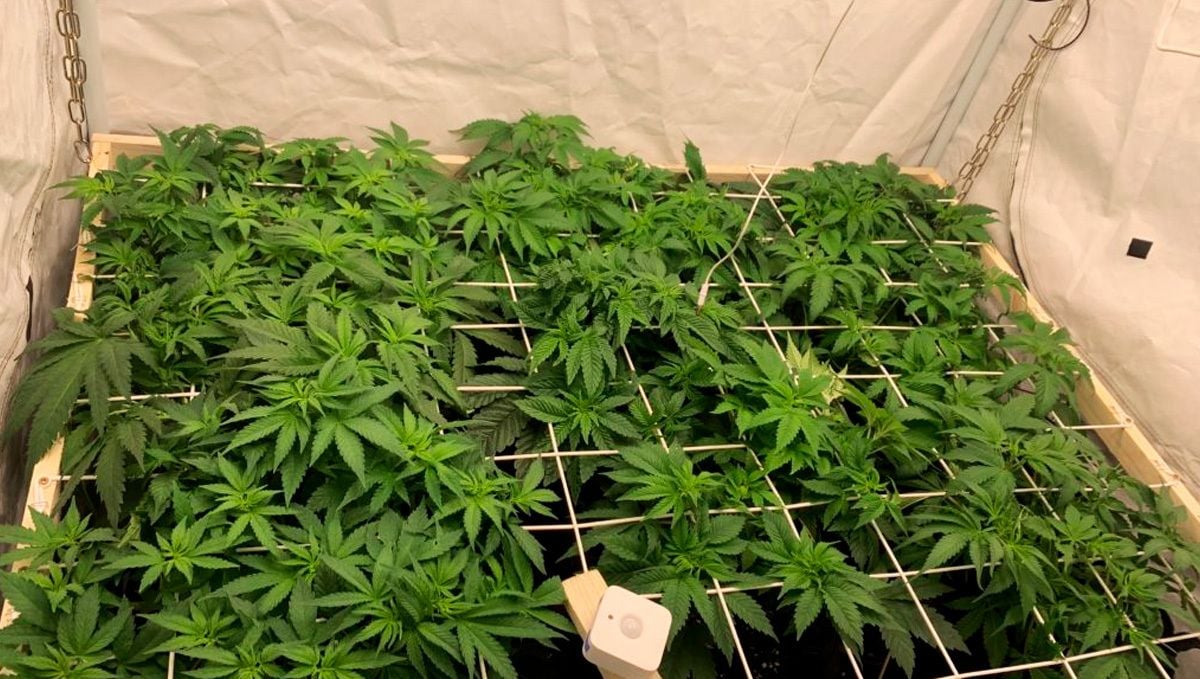
Known as Screen of Green, this technique prevents the plants from growing too much upwards as the screen prevents them. You can remove all the leaves below the screen but as you tuck the branches growing on top of the screen, you’ll notice many buds forming just because there’s an even canopy that allows uniform distribution of light.
Ensure Adequate Air Circulation Throughout the Grow Area and Air Exchange In and Out of The Room
One aspect of cultivation that has a direct impact on the amount of flowering stretch a plant may display is the air circulation and exchange within a grow room or tent. Outdoor gardens benefit from the natural air movement the environment provides, but with indoor cultivation techniques, we have to take that into our own hands. The air movement throughout the canopy has a direct and noticeable result on how thick and strong the branches and stems of your crop will eventually be.
Grow rooms with insufficient air movement will result in tall and spindly plants that will over-stretch and eventually need help to support the buds (if they grow dense enough, that is). To combat this issue you can add a few oscillating fans into the grow area pointing at the canopy from different directions. If you have a small operation then one fan should be just fine, but if you are running a larger tent or room you should aim to have a fan pointing up into the canopy and at least one from the side. This way you have multiple air directions pushing the canopy which will help in that vigorous and thick stem growth we are looking for.
4. In Conclusion
So, as you can see, there are multiple ways to help your crop grow into the thick, dense bushes that we are all hoping for. With a little careful planning, you should have no problems achieving the yield of your dreams! Just remember that everything we expose our crop to can have a result on the growth rates, and in turn the final product. Happy growing, and good luck!








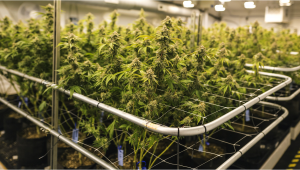
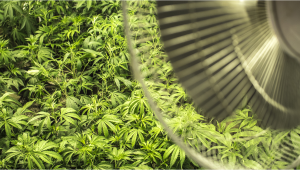

Comments